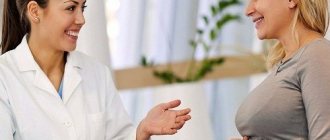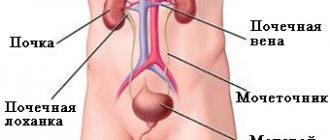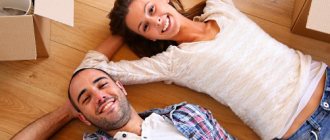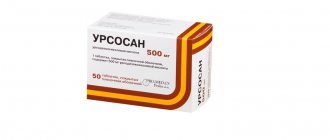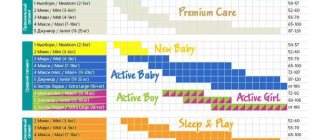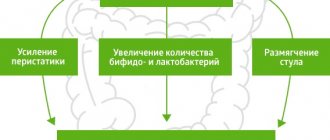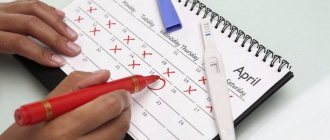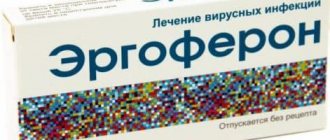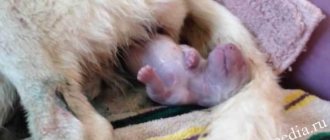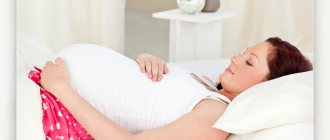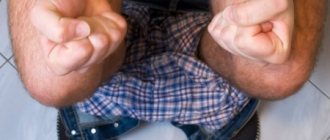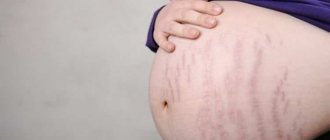Carrying a child is a complex and lengthy process during which the female body undergoes many physiological changes. And childbirth itself is the final stage, during which a woman experiences enormous stress and stress. Therefore, after the birth of a child, the body enters a rehabilitation phase, which begins with the process of cleansing the uterus. It is accompanied by copious discharge of blood clots from its cavity. This is a natural physiological phenomenon, but it causes a lot of inconvenience, especially in the first days after childbirth, when the woman is in the maternity hospital, while her body is still weak, but she must also independently care for her baby. Special adapting agents help facilitate the recovery process. In this case we are talking about postpartum pads. Let's look at what they are, the feasibility of their use, and also review popular manufacturers.
How to choose?
When planning to become a mother, a woman needs to pack a bag for the clinic in advance, which will contain all the necessary hygiene items, including pads. If it’s difficult to choose, you need to rely on several important criteria, since not every hygiene product will cope with the upcoming tasks. Thus, “daily products” and means for critical days have their own form and composition, and therefore cannot protect against heavy bleeding. And if a pregnant or postpartum woman has problems with incontinence, then even more so.
After childbirth, mucous tissue, blood clots and other secretions remain in the uterine cavity, which are gradually released as the muscles contract. The maximum amount of such discharge is observed in the first 2 hours after birth. They are fragments of membranes, mucus and dark liquid blood with clots. Obstetricians call such discharge lochia and recommend stocking up on sterile postpartum pads.
https://www.youtube.com/watch?v=ytdevru
Sterility is an important factor, since the open wound and the presence of sutures require extreme cleanliness to prevent severe bacterial complications. At first, doctors closely monitor the woman’s condition and give recommendations on how to avoid problems. As soon as the acute period passes, the woman is transferred to the general ward.
Further, the discharge becomes less, but clots still come out. While the woman is resting, the lochia practically does not come out, but as soon as she takes a vertical position, under the influence of gravity, all the fluids accumulated in the vagina rush down. Therefore, the use of specialized pads after childbirth is the price not only of a woman’s health, but also of her comfort.
Sterile pads must be made from cellulose, clinically tested, and recommended by dermatologists. They absorb a lot of liquid at once and, in addition, eliminate odor. Thanks to the soft layer, they do not cause irritation, chafing or allergies. The production excludes the use of dyes and flavors that can be harmful to health.
Purpose
Regular pads, which can be bought at any store or pharmacy, are not suitable for the early postpartum period. The fact is that after childbirth, a larger volume of discharge leaves the genital tract than during menstruation.
These discharges are called lochia and consist mainly of blood. It is released in large quantities from the blood vessels, which become damaged when the placenta is separated from the wall of the uterus, because during the period of bearing the baby, the “baby place” and the reproductive organ grow tightly together. As the placental wound heals, clots appear in the discharge, and then serous fluid. This composition makes lochia potentially dangerous to the health of the postpartum mother.
They differ from menstrual discharge in the absence of enzymes and endometrial particles. But the abundance of red blood cells makes lochia a favorable environment for the proliferation of pathogenic bacteria. Once this process begins, it invariably leads to severe inflammatory consequences.
At the end of the second day, the woman can begin to use the hygiene products that she took with her to the maternity hospital. It is better if these are special postpartum pads. This is a convenient hygiene product that meets the key requirements mentioned above.
If the pads are chosen correctly, they will provide comfort to the postpartum mother, adapting as anatomically as possible to the natural shapes and curves of the perineum. They are soft, their surface does not cause sweating and friction, and therefore they can be used even after an episiotomy performed during childbirth - a dissection of the perineum.
What diapers are best to take to the maternity hospital for a child?
The choice of diapers for a newborn should be approached with special responsibility.
It is difficult to predict what weight your baby will be born with. The actual weight does not always coincide with the weight discussed at the last ultrasound.
To avoid incidents, it is better to take size 2. Size 2 is designed for a baby 3-6 kg. If necessary, you can replace them with a smaller size in the future.
No need to buy a large pack of diapers:
- Firstly, for the maternity hospital you will need no more than 10 pieces
- Secondly, some diapers tend to cause allergies in a newborn. If you buy a large package, you might just be wasting your money.
When choosing diapers for your baby, remember that they should be as comfortable as possible for your child:
- Choose thin diapers - at first he will go to the toilet just a little bit at a time
- Choose soft diapers. The main thing is that they are pleasant to the body and do not rub
Wide selection of diapers
What is the difference between special gaskets?
As already mentioned, the appearance of special hygiene products and regular ones for critical days is similar, but there are also significant differences. In order not to make a mistake when choosing which pads to take to the maternity hospital, you need to pay attention to the sizes - special ones will be wider and longer. Such features will provide protection against leakage even in a horizontal position.
When ordering hygiene products, you need to pay attention that there are postpartum and urological ones. Both options perfectly absorb large amounts of liquid, but the first are recommended for preventing bleeding after childbirth, and the second for urinary incontinence in pregnant women and the postpartum period. If in doubt, you can consult your doctor.
When comparing products from different manufacturers, evaluate the company’s reputation and its length of stay on the market. In addition, on various forums you can find reviews from women who have already used such products and express their opinions about them. It would be a good idea to read them and make sure you make the right choice!
If we compare postpartum pads with regular ones, we can note a number of distinctive features.
- Size – maternity hygiene products are longer and wider, their outer adhesive surface is much wider than most ordinary pads. Size matters in this case, since the increased width prevents leakage even when lying on your back.
- Material - the outer top layer in special pads always consists of materials with a high degree of breathability, which is important for drying tears and seams in the crotch, if any.
- Filler – capable of absorbing four glasses of liquid. Conventional gaskets cannot boast of this ability. Some types of postpartum hygiene products can even absorb small and medium-sized blood clots.
- Impregnation - most postpartum pads are impregnated with special anti-inflammatory compounds that increase the effectiveness of antibacterial prophylaxis.
But the “droplets”, by the number of which women determine the absorption capacity and purpose for secretions of varying abundance, are the same in special hygiene products as in the usual ones. This greatly simplifies the task of choosing.
Advantages of highly specialized products
Maternity pads are not only soft and breathable, they are specially designed to provide maximum comfort to a woman in the first days and weeks after childbirth. A number of the following advantages speak in favor of this choice:
- stimulation of the tissue healing process (tears, microcracks) after natural childbirth. Natural materials do not provoke irritation or allergies, and have wound-healing properties;
- protection from discomfort and itching. Redness and itching in the genital area are often associated with a damp environment. Specialized pads instantly absorb mucous and bloody secretions, maintaining dryness and cleanliness, eliminating the cause of skin irritation;
- normalization of microflora. Antiseptic properties will protect against infection and proliferation of pathogenic microflora;
- elimination of unpleasant odor. Special pads are taken to the maternity hospital because they can be worn longer without fear of leaks and discomfort.
What a mother and child need in a maternity hospital: tips and reviews
The list of things, according to reviews of women who gave birth, basically comes down to the list discussed above.
Things for a child
However, the following advice is available:
- Do not disdain the shirts and gowns that are issued in the maternity hospital. They may not look very presentable, but they are definitely sterile. Shirts get dirty very quickly, not every relative will be able to bring clean clothes at the first call
- There is no need to buy silicone pads in advance - they are expensive
- There is no need to take a breast pump with you - it may not be useful either. If necessary, relatives will bring
- Mom can safely use baby cream instead of hand cream - saving space in her bag
- Compression stockings are much more comfortable than elastic bandages.
- Breast pads are not useful to everyone - there is no need to take them right away
- Instead of mother's soap and shower gel, you can use baby soap. It’s better to take liquid with a dispenser - convenient and hygienic
- You may come across recommendations that you need to take a bar of dark chocolate with you for your mother after giving birth. Chocolate is a strong allergen. Don't risk your baby's health
The woman is ready to go to the maternity hospital
As the birth approaches, the woman begins to worry more and more whether she has planned for everything. Don’t give in to emotions - the above lists of things will help you better navigate and not forget anything.
Postpartum or urological?
Some pharmacists may offer urological pads instead of postpartum pads. The latter are intended for people with urinary incontinence, and expectant mothers have a question: are these pads suitable for them? Quite, according to reviews, since the difference is not so significant. Urological pads are capable of absorbing up to one liter of liquid, they neutralize odors, and the absorbed liquid is converted into a gel and distributed throughout the pad, while postpartum pads absorb less, but are able to “swallow” more viscous secretions, but they are absorbed only at the point of entry of the liquid without spreading over the entire area.
Which gaskets to choose depends on you. Judging by the reviews, many women get by even in the first days after childbirth with ordinary “night” pads, without experiencing any discomfort or complications, since the latter partly arise not so much from improper hygiene products, but from failure to observe the same hygiene of the external genital organs.
Among the most popular brands are Pelegrin, Canpol Babies, Chicco, Tena Lady, Moli Med, Seni Lady, etc. All of them are widely popular among mothers and have a number of advantages, and only some of them have small disadvantages (for example, the absence of “wings” in pads from Moli Med;
In many ways, postpartum pads are similar to urological pads - both options have an absorbent and an upper absorbent layer that provides air exchange. The differences are as follows:
- the structure of postpartum pads is specially designed to absorb bloody, viscous discharge, and urological pads - for urine;
- Maternity products are sterile, which provides protection from the bacterial environment.
It is allowed to use urological pads instead of postpartum pads if the woman in labor exhibits incontinence. In such a situation, specialized products are selected that eliminate the characteristic odor and quickly absorb a large volume of liquid. The manufacturer may put a mark on the packaging that urological pads are approved for use after childbirth.
Benefits of postpartum pads
Special pads are able to absorb more secretions and have a different texture and material. The manufacturing technology ensures the inadmissibility of allergic reactions and the elimination of irritation during wear.
Attention! Postpartum pads are simply necessary for women who have undergone a cesarean procedure and for those who have had stitches. Thanks to the special texture and materials used in production, they promote the healing of sutures.
Positive properties:
- provide comfort, freshness and cleanliness;
- do not stick to seams resulting from operations;
- hypoallergenic, do not cause irritation even to sensitive skin;
- environmentally friendly and non-toxic;
- provide protection against penetration of microorganisms and bacteria into the reproductive system;
- good air exchange necessary for the recovery process.
Buy postpartum pads in specialized stores or pharmacies
Frequently asked questions
https://www.youtube.com/watch?v=ytcreatorsru
How many pads to take to the maternity hospital?
It is advisable not to save, but to take with reserve. If there are any left over, you can then give them to roommates or friends who are about to give birth. If there are 20 pieces in a pack, it is better to take 2 packs with you in order to replace hygiene products on time, feel comfortable and ensure rapid healing of ruptures, if any.
Which is better - scented or unscented?
It is better to choose the most natural option. There are products soaked in chamomile and aloe extracts. In addition to their pleasant aroma, they eliminate specific odors from blood discharge. Some doctors advise against the use of scented hygiene products because the body may suddenly react with an allergy to various additives. To play it safe, it is better to give preference to proven products that have passed dermatological testing.
How often should you change pads after childbirth?
This is an individual question. It is recommended not to strive for excessive savings at the expense of health, but to change hygiene products as often as necessary, as they become dirty. The frequency depends on the volume of discharge. During the first two days, heavy discharge usually occurs when the woman assumes an upright position.
Features of use
The purchase of this hygiene product should be taken care of in advance for the most comfortable passage of the postpartum period. It is recommended to buy several packs of pads for use in the first days at the stage of preparation and preparation for the maternity hospital. Otherwise, you can waste your nerves, time and, as a result, make a spontaneous purchase that does not meet your needs.
When packing your bag for the maternity hospital, don't forget to take pads
Familiarization with their characteristics and personal use will help determine which products will be optimal. In order to check which gaskets fit best, you can buy several brands for comparison. Over time, the amount of discharge decreases and disappears. It is difficult to say how long the recovery period will last due to the individual nature of this process. Therefore, it is not recommended to purchase many packs of pads of the same volume at once. After 1-2 weeks of use, you can gradually switch to pads with fewer drops.
The choice of such personal hygiene products as postpartum pads is very important. The comfort of the first days after childbirth, the state of health and the speed of healing of the sutures depend on how correctly it is done. Great importance must be given to the quality of the products, the material of manufacture, the presence of wings and convenient methods of fixation.
Useful tips
When choosing hygiene products for the postpartum period, you should not buy too many of them. Lochia will be abundant only during the first 3-5 days, then it will become moderate, and after a week it will begin to gradually decrease in quantity.
For this period, it is enough to purchase 3 packs of postpartum pads. For the subsequent rehabilitation period, you can buy other pads and do this later, when the nature of the discharge and its quantity, taking into account the individual characteristics of the postpartum period, is clear.
You can learn more about postpartum pads from the following video.
